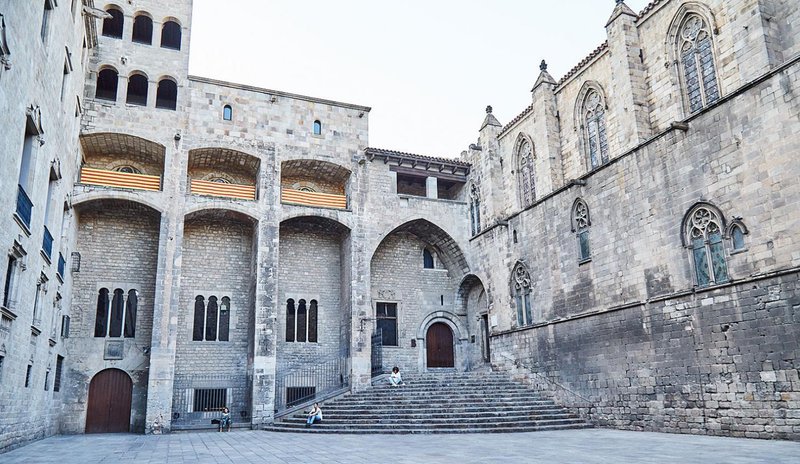Mediaeval Barcelona
Capital cities make ideal holiday destinations and Catalonia’s capital Barcelona can rival the best of them. Barcelona attracts many thousands of foreign visitors every year but the city also has plenty to offer the local tourist. With its long history, each new visit to Barcelona can provide an unexpected discovery of a city that we might think we already know very well.
This tour begins in the square of Plaça del Rei, a key site in the history of Barcelona. For centuries, it was the centre of a city that during the Middle Ages became the trading capital of the Mediterranean and today the square is home to the Barcelona City History Museum.
Not far away, Barcelona’s Town Hall also dates back to the mediaeval period and as a building and an institution over the centuries it has managed to survive catastrophes, wars and sieges of all kinds.
Around the corner is to be found the cathedral, which stands out among Gothic and neo-Gothic constructions and competes with such beautiful churches in the city’s Gothic Quarter as Santa Maria del Pi or the magnificent Santa Maria del Mar, in the Ribera district. This is where the mediaeval palaces of Carrer Montcada today host museums and art galleries, while a few streets away, on Via Laietana, Plaça Ramon Berenguer is a square that shows a harmonious blend of Roman and mediaeval legacy.
Absorbed by the city
The oldest churches in Barcelona, Sant Pere de les Puel·les and Sant Pau del Camp, both Romanesque in style, retain the old rural essence of the villages that once stood outside Barcelona’s city walls. Over the centuries these villages have been absorbed by the city and the churches are in what are now the neighbourhoods of Sant Pere and Raval.
Near the seafront, more Gothic buildings, such as the former trading house known as La Llotja and the Reials Drassanes, or Royal Wharfs, that today house the Barcelona Maritime Museum, point to Barcelona’s maritime past during the Middle Ages.
Mediaeval Barcelona lived enclosed by its defensive walls that were updated as the city grew. However, by the middle of the 19th century, rather than protecting the local population, the walls kept the city’s residents crammed into densely populated alleyways where diseases spread rapidly. The walls had also become an obstacle to the city’s industrial expansion and so the decision was made to demolish them, and only sections have survived until today. With his new way of understanding urban life, Ildefons Cerdà planned a harmonious and orderly extension to the city known as the Eixample, which left the old mediaeval area in danger of falling into decay and isolation. Luckily, Barcelona later reclaimed and beautified its old town and over the past few decades it has become one of the city’s key tourist assets.
out & about
Beyond the city walls
The remains of Barcelona’s mediaeval past is not only to be found in the central neighbourhood of Ciutat Vella. Far from the walls, there were several unique buildings in the Middle Ages that, with the urban growth of the 19th and 20th centuries, were finally integrated into the city. This is the case of Pedralbes Monastery. Today, the landscaped space off Diagonal avenue is a quiet and secluded oasis in a busy city.

